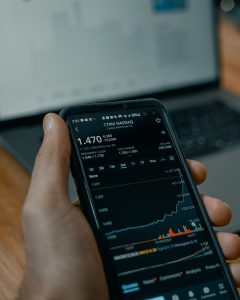Margin is a crucial concept in forex trading that every trader must understand. It refers to the amount of collateral or security required by your broker to open and maintain a leveraged trading position. Margin is expressed as a percentage of the full position size and determines the amount of funds you need to have in your trading account to open a position.
Calculating margin in forex involves several steps, and it is important to get it right to avoid margin calls or liquidation of your positions. In this article, we will explain the concept of margin and guide you through the process of calculating it.
What is margin in forex?
Margin is the amount of capital that a trader must deposit with his or her broker to open and maintain a leveraged trading position. It serves as collateral or security for the broker in case the trader incurs losses that exceed the initial deposit. Margin is usually expressed as a percentage of the full position size and is determined by the leverage ratio, which varies depending on the broker and the trading instrument.
Leverage is a double-edged sword that can magnify both profits and losses. It allows traders to control larger positions than their account balance would permit, but it also exposes them to higher risks. For example, if your broker offers a leverage ratio of 1:100, you can control a position worth $100,000 with a margin requirement of only $1,000.
However, if the trade goes against you and the position loses 1% of its value, you would lose $1,000, which is equal to your entire initial deposit. If the loss exceeds your deposit, your broker may issue a margin call, which requires you to deposit additional funds to maintain the position or close it out.
How to calculate margin in forex?
To calculate the margin required for a forex trade, you need to follow these steps:
Step 1: Determine the leverage ratio
The first step is to determine the leverage ratio offered by your broker. Leverage ratios vary depending on the trading instrument and the broker’s policies. Typically, forex brokers offer leverage ratios ranging from 1:50 to 1:500, but some may offer higher or lower ratios.
Step 2: Determine the position size
The second step is to determine the position size you want to trade. This is the amount of the base currency (the first currency in the forex pair) that you want to buy or sell. The position size is measured in lots, which represent standardized units of currency. One standard lot is equal to 100,000 units of the base currency.
For example, if you want to buy EUR/USD at a price of 1.2000 with a position size of 1 standard lot, you are buying 100,000 euros and selling an equivalent amount of US dollars.
Step 3: Determine the margin requirement
The third step is to determine the margin requirement for the position based on the leverage ratio and the position size. The formula for calculating the margin requirement is:
Margin = Position size / Leverage ratio
For example, if your broker offers a leverage ratio of 1:100 and you want to trade 1 standard lot of EUR/USD, the margin required would be:
Margin = 100,000 / 100 = 1,000 euros
This means that you need to have at least 1,000 euros in your trading account to open and maintain the position.
Step 4: Calculate the margin level
The margin level is the ratio of the equity in your trading account to the used margin. It shows how much of your account balance is used as collateral for your open positions. The formula for calculating the margin level is:
Margin level = Equity / Used margin x 100%
Equity is the current value of your trading account, including any profits or losses from your open positions. Used margin is the amount of margin that is currently tied up in your open positions.
For example, if you have a trading account with a balance of 10,000 euros, and you have an open position in EUR/USD with a margin requirement of 1,000 euros, your equity is 10,000 euros, and your used margin is 1,000 euros. Your margin level would be:
Margin level = 10,000 / 1,000 x 100% = 1,000%
A margin level of 100% means that your equity is equal to your used margin, and you have no free margin. A margin level below 100% indicates that you have open positions that are losing money and that your account is at risk of a margin call.
Conclusion
Margin is a critical concept in forex trading that every trader must understand. It determines the amount of collateral or security required by your broker to open and maintain a leveraged trading position. Calculating margin in forex involves determining the leverage ratio, the position size, the margin requirement, and the margin level. It is essential to manage your margin carefully to avoid margin calls, which can result in the liquidation of your positions and the loss of your capital.





